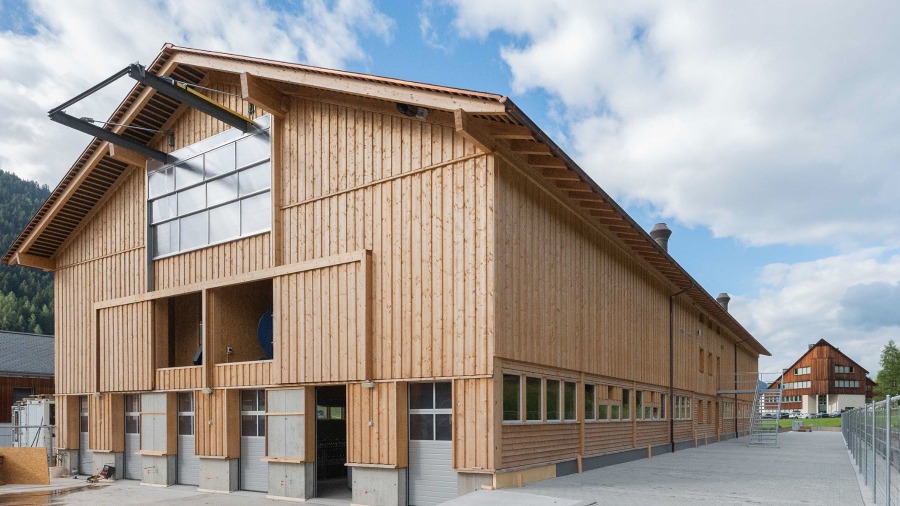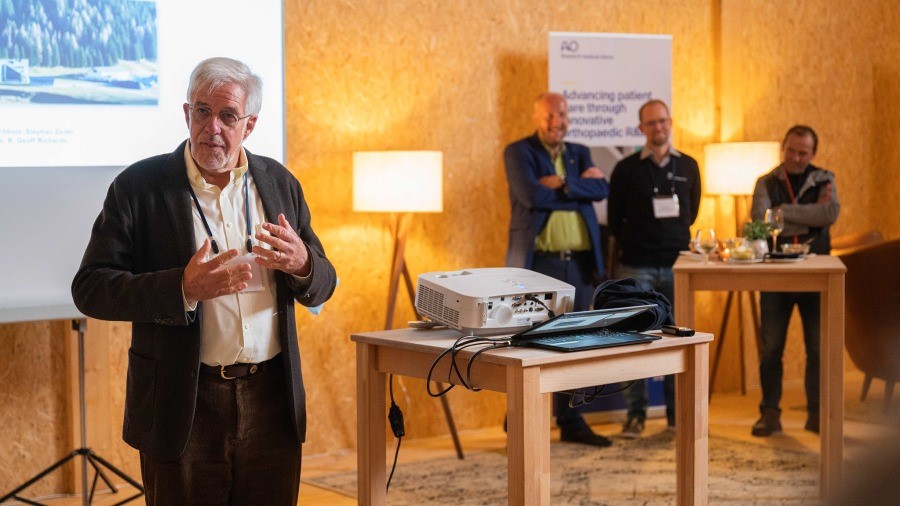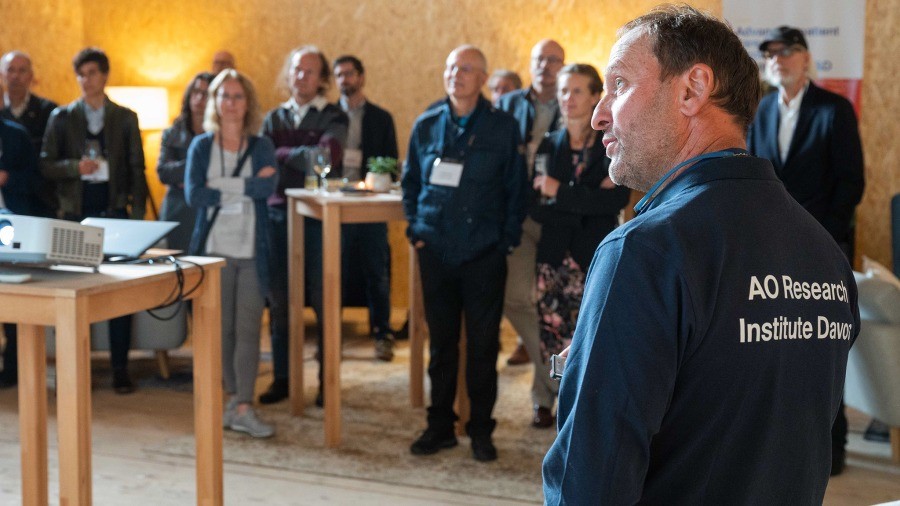Opening the doors to Europe’s first specific pathogen free sheep flock at the AO Research Institute Davos

The pre-inauguration gave invitees a one-time chance to tour the facility, before all areas get disinfected, and it then officially closes to all but the sheep and their caregivers.
Christoph Lindenmeyer, CEO, Geoff Richards, Director of ARI and Executive Director AO Foundation R&D, Daniel Arens, Senior Project Leader, as well as Urban Lanker, Manager Preclinical Facility at ARI were happy to welcome many representatives of the cantonal and local community. These included Jon Domenic Parolini, Regierungsrat at Kanton Graubünden and the Mayor of Davos, Philipp Wilhelm (Landammann). Unfortunately, Stephan Zeiter, Program Manager Preclinical Services and Tim Buchholz, Project Leader, were not able to attend, after having dedicated much time to this project.
Why sheep and what are SPF sheep?
When preclinical research into bone fractures and therapies involving animals is needed to ensure that new treatments are effective and safe, sheep are often selected because the healing of a fracture is very similar in sheep and humans.
SPF animals are better than non-SPF animals for such research, as they are free of certain pathogens that the animal could carry without showing clinical symptoms. Once sheep are part of a study, a disease could break out and either, in the worst case, result in losing the animals, or affecting the outcome of the study, as the sheep would have to fight the disease. Further, certain pathogens can also infect humans. Hence the desire to use SPF sheep in studies.
Animal welfare has always been, and remains, central to the AO and ARI, therefore SPF animals used in research also follows this, as Zeiter explains “Sheep without underlying diseases not only increase the reproducibility and safety for the sheep and humans, but we will use fewer sheep in research because there is less variability involved”.
Overcoming the challenge of breeding SPF sheep
During the tour, Lanker, Manager Preclinical Facility at ARI, explained how important both the breeding process as well as designing the unique facilities are, and how they broke new ground in ensuring the highest quality and standards to ensure lambs delivered by C-section are healthy and beyond as they grow.
Breaking ground with the new facility
The facility has ventilation systems that adapt to the temperature conditions outside, while the lighting is also programmed to give natural light cycles, rendering the whole facility as open air and natural as possible including a spacious open-air plan.
During the tour, Lanker demonstrated how the facility is set up to ensure the highest levels of hygiene. Instruments and machines are disinfected beforehand and only used in the hygiene zone, caregivers must also take special precautions for example changing clothes and taking either traditional water or an air shower.
Built into this facility is a biogas project that will reduce methane output to the atmosphere and churn out renewable green energy and heat. The unit will utilize the sheep dung as well as grass cutting from non-agriculture areas.
Further, solar panels will be installed on the biogas unit producing even more green energy. Richards sees this adjacent biogas facility as an exciting future motivator for the next generation “We will invite local schools on a yearly basis to visit our biogas unit to help motivate the young generations to the power of renewable energy and to encourage local farmers to consider this process for their farms."
Once open, the facility will house over 200 sheep, the biogas unit including solar panels will produce energy and heat not only for the SPF facility but also for the adjacent preclinical facility. There will be power stations to charge the machines used within the facility, as well as electrical cars. Finally, the remaining product can still be used as a high-quality (methane-free) fertilizer.
You may also be interested in the article about the ARI biogas reactor.




